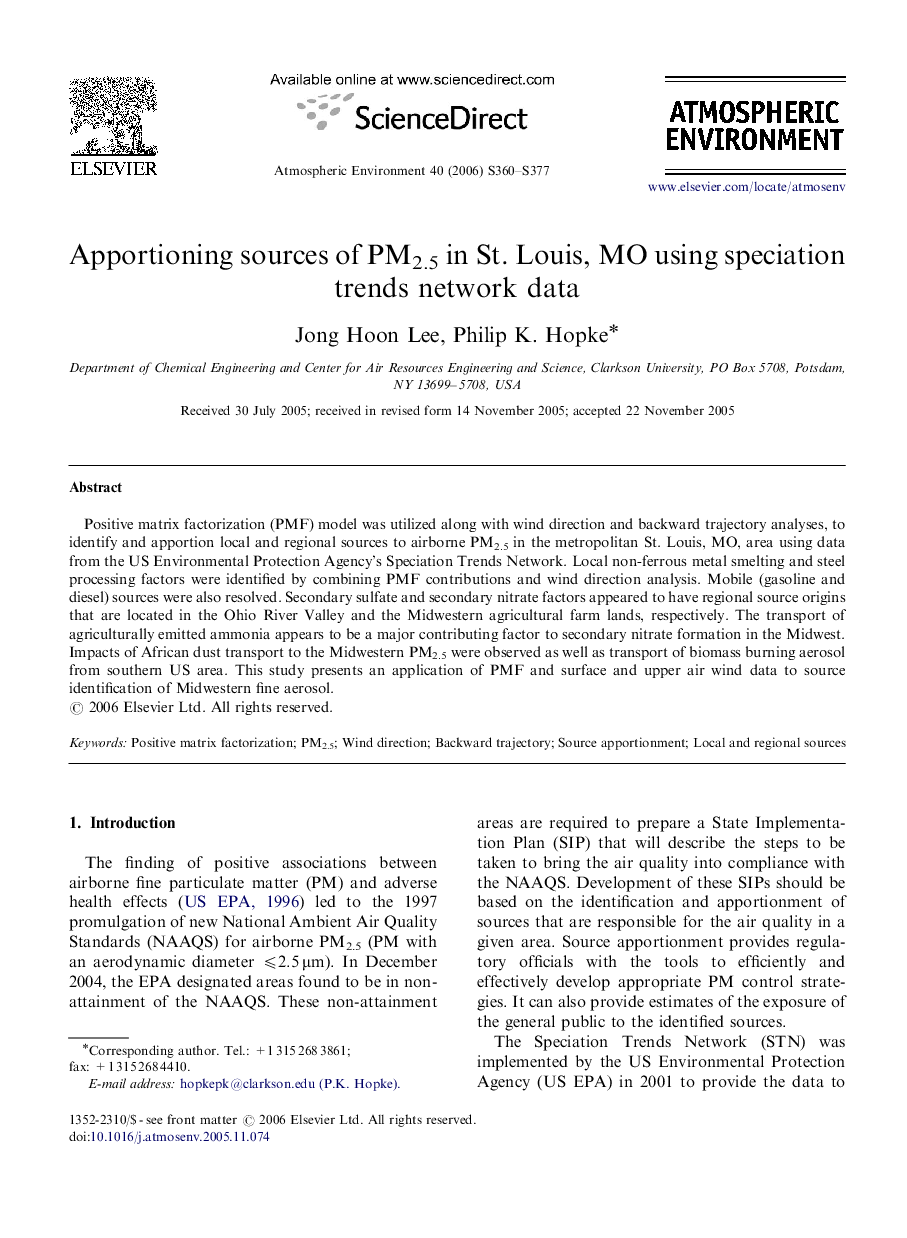| Article ID | Journal | Published Year | Pages | File Type |
|---|---|---|---|---|
| 4445111 | Atmospheric Environment | 2006 | 18 Pages |
Positive matrix factorization (PMF) model was utilized along with wind direction and backward trajectory analyses, to identify and apportion local and regional sources to airborne PM2.5 in the metropolitan St. Louis, MO, area using data from the US Environmental Protection Agency's Speciation Trends Network. Local non-ferrous metal smelting and steel processing factors were identified by combining PMF contributions and wind direction analysis. Mobile (gasoline and diesel) sources were also resolved. Secondary sulfate and secondary nitrate factors appeared to have regional source origins that are located in the Ohio River Valley and the Midwestern agricultural farm lands, respectively. The transport of agriculturally emitted ammonia appears to be a major contributing factor to secondary nitrate formation in the Midwest. Impacts of African dust transport to the Midwestern PM2.5 were observed as well as transport of biomass burning aerosol from southern US area. This study presents an application of PMF and surface and upper air wind data to source identification of Midwestern fine aerosol.
